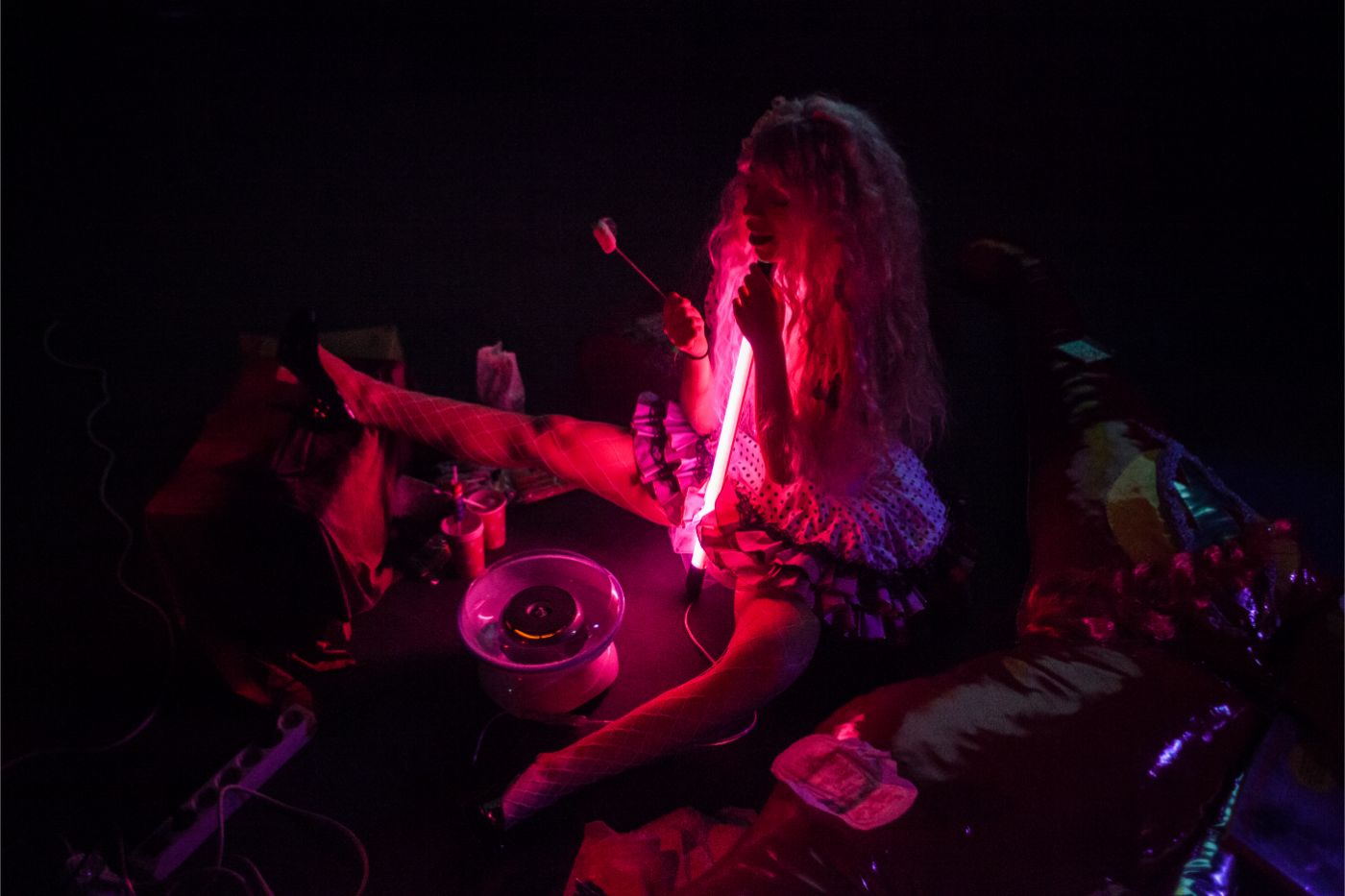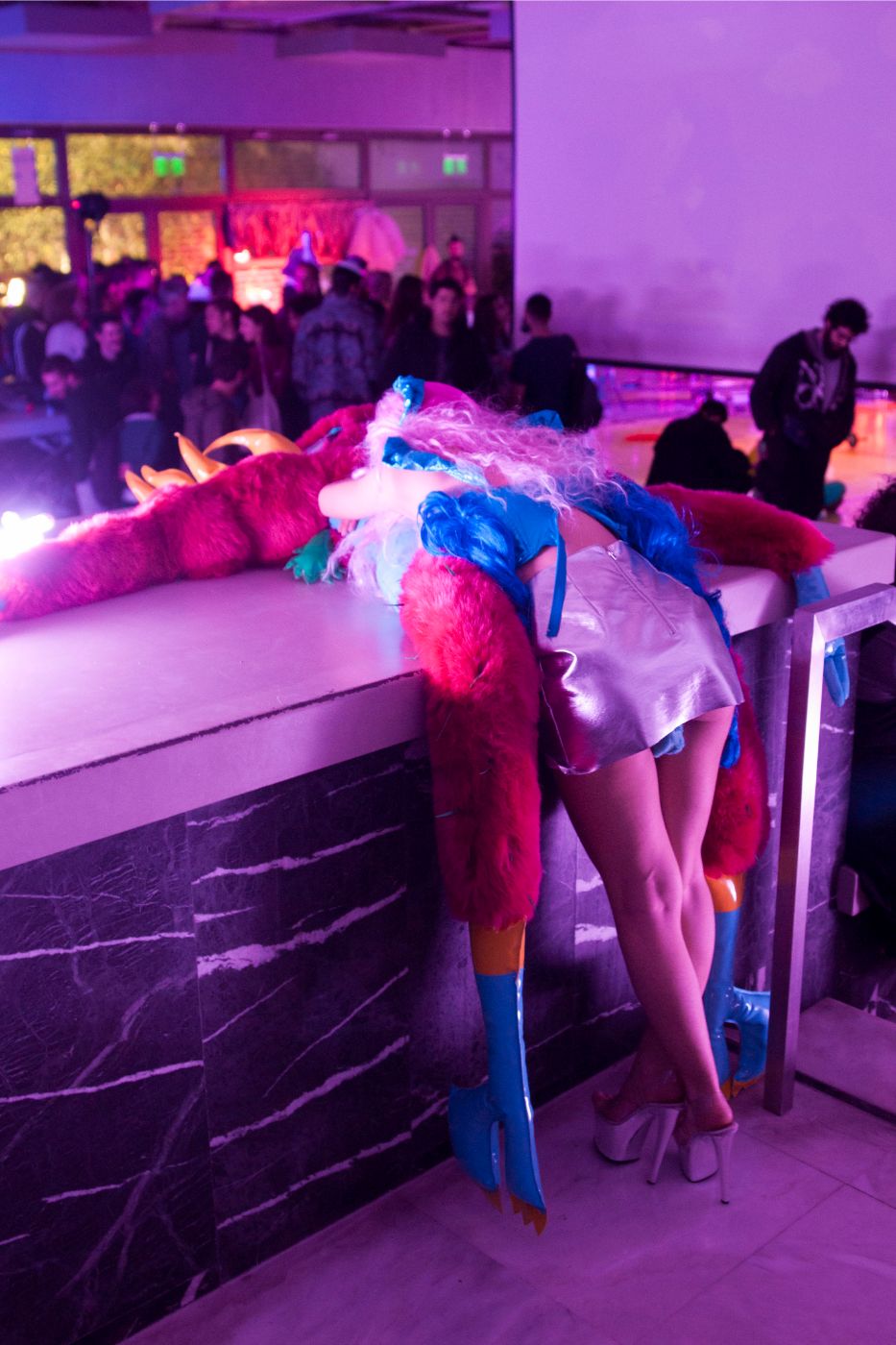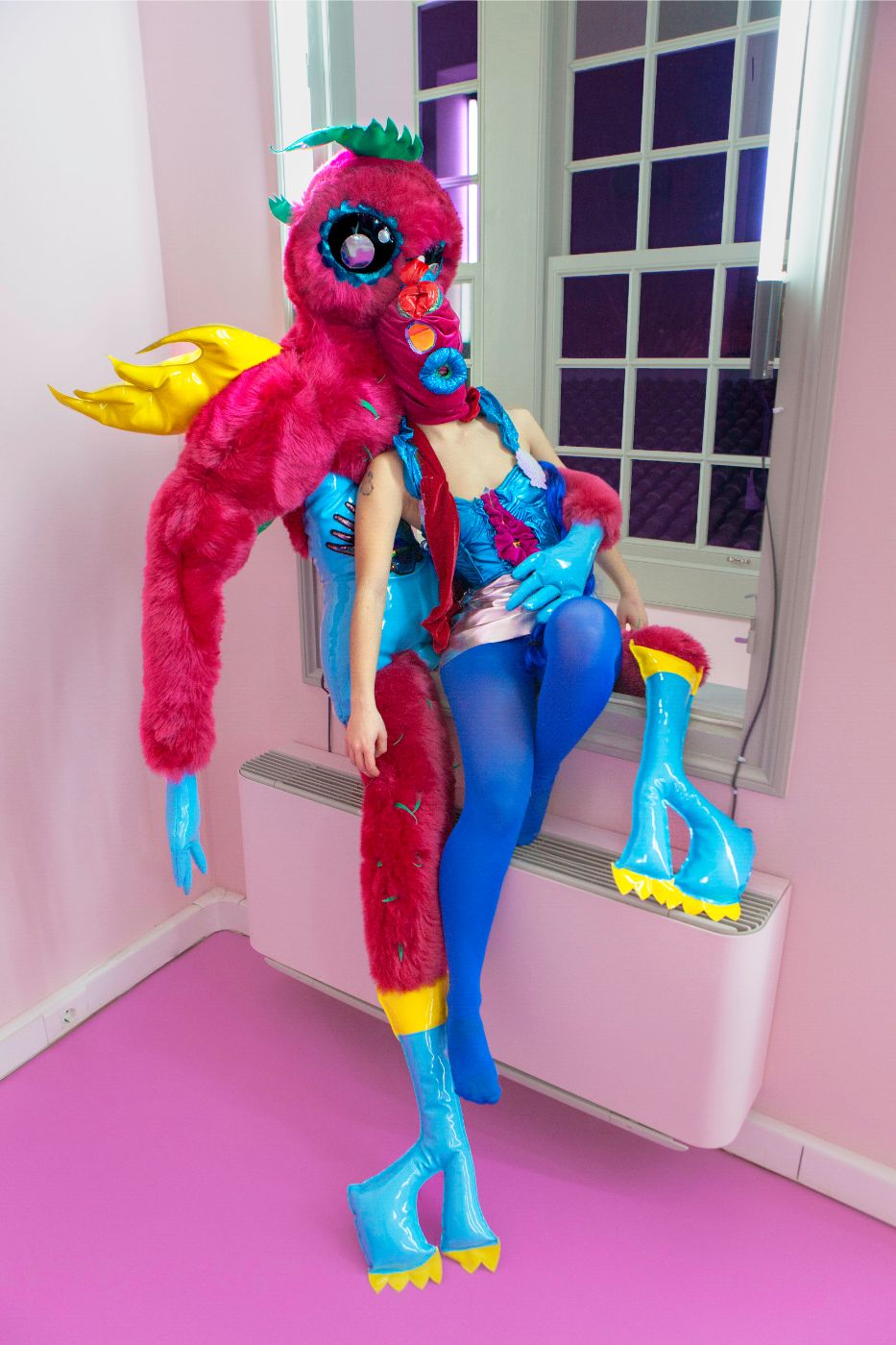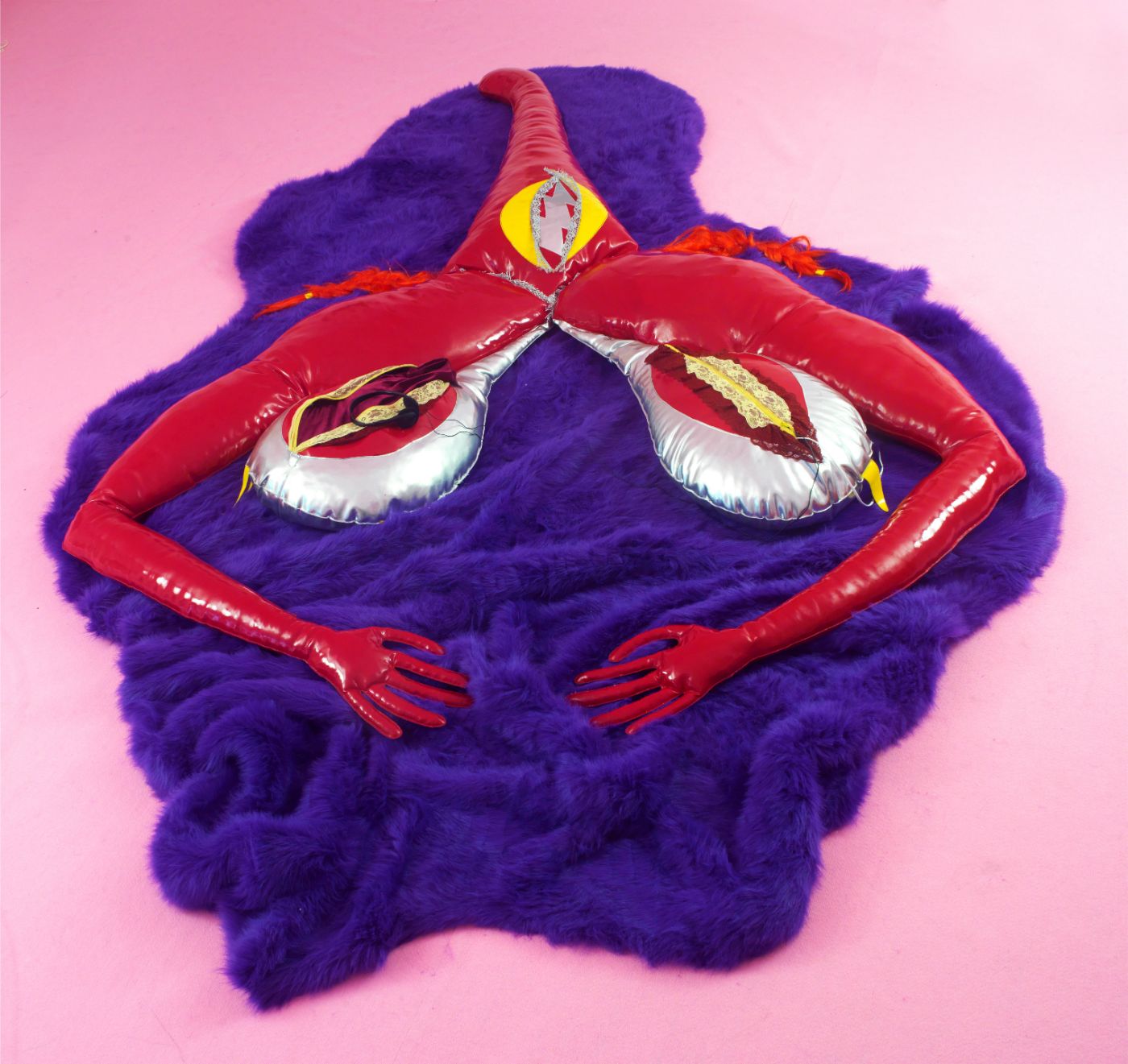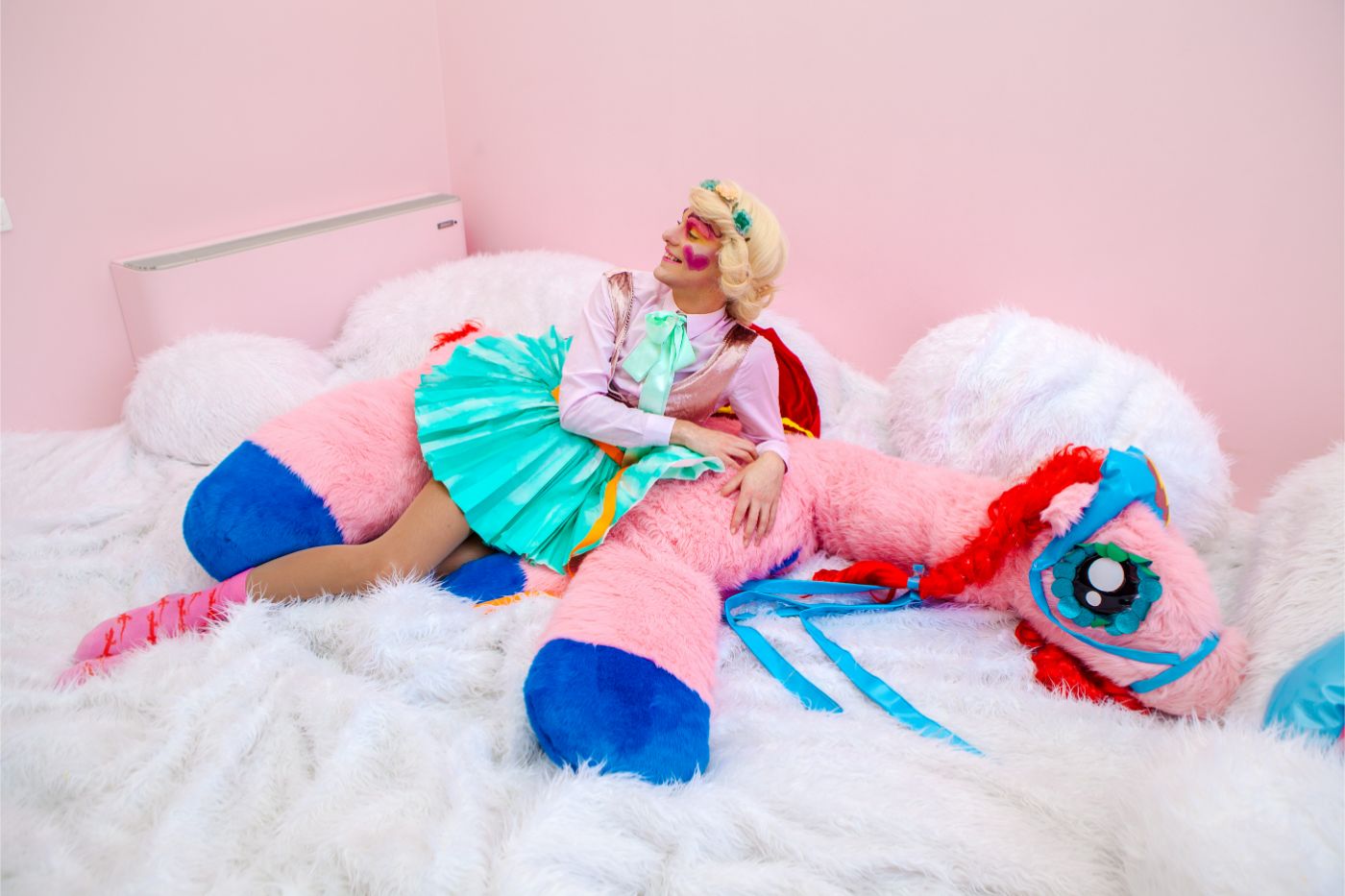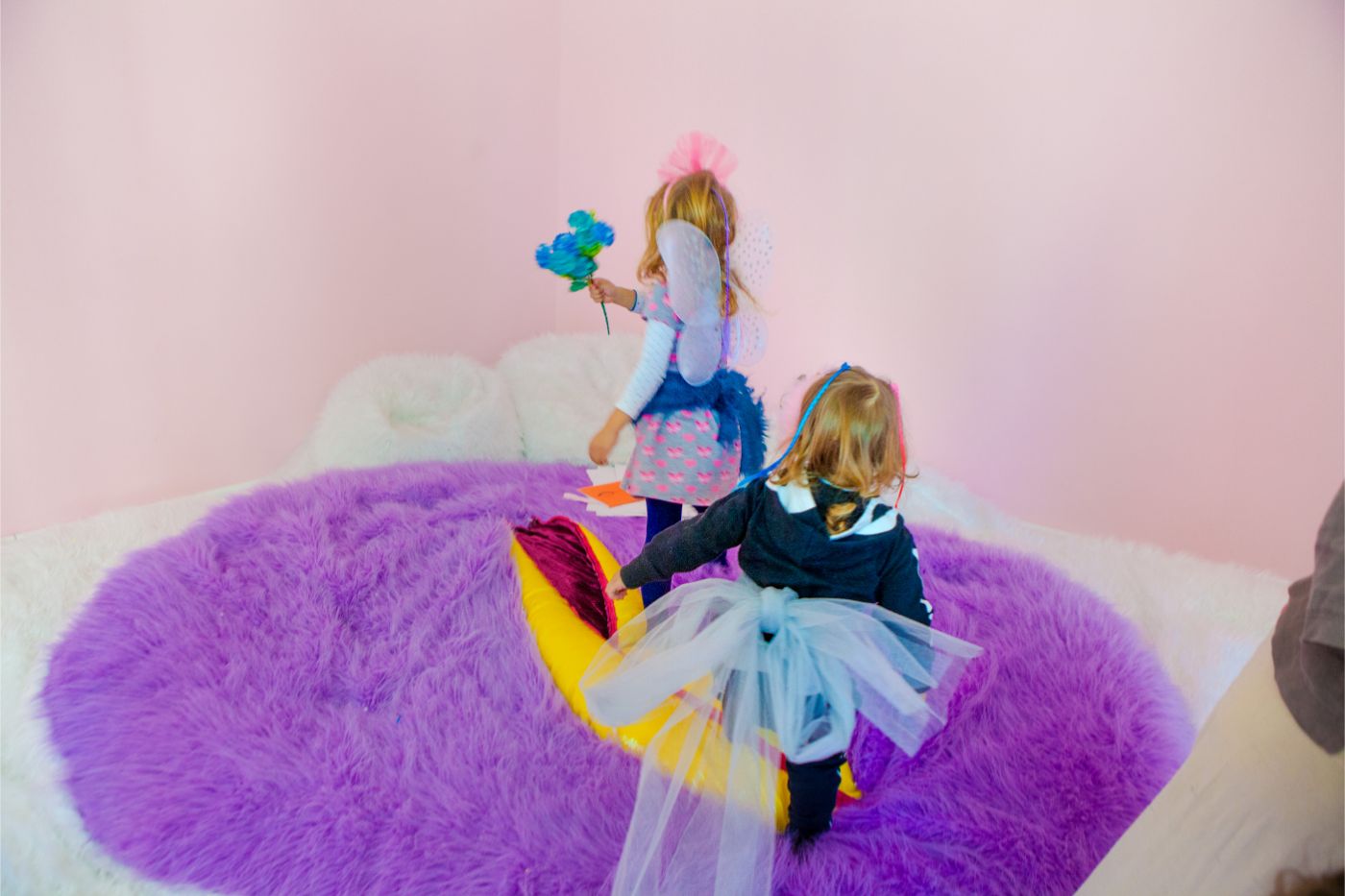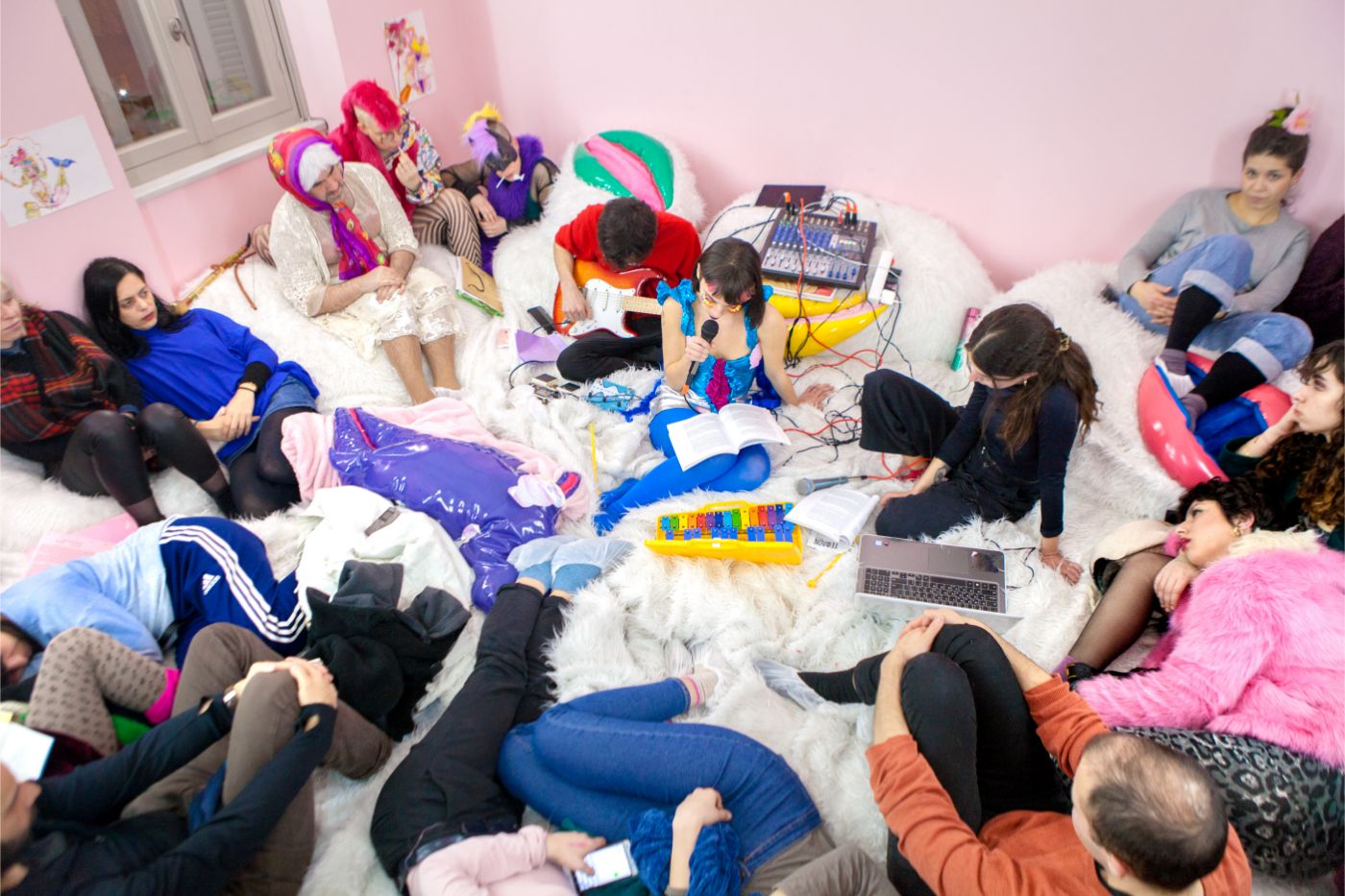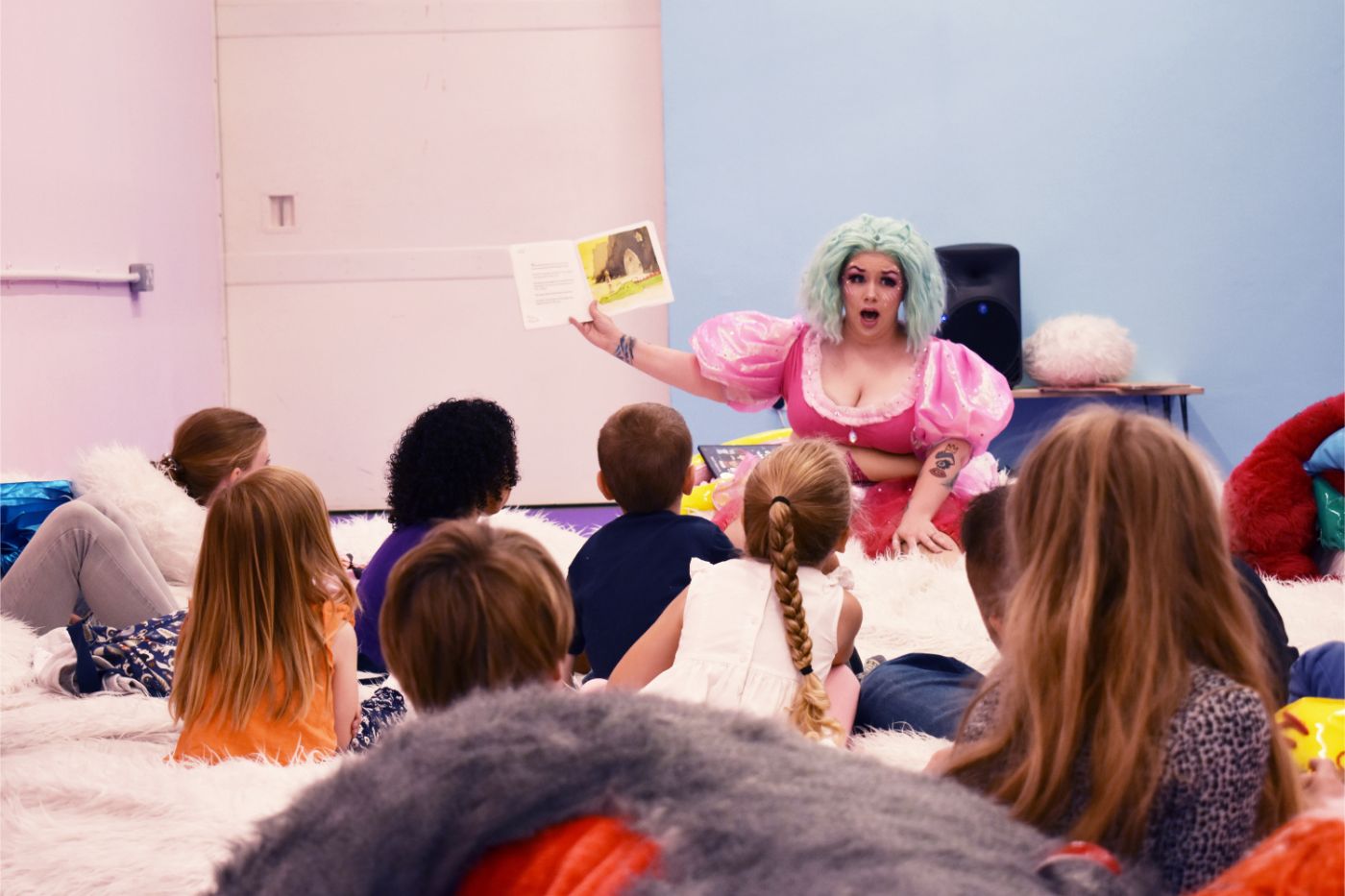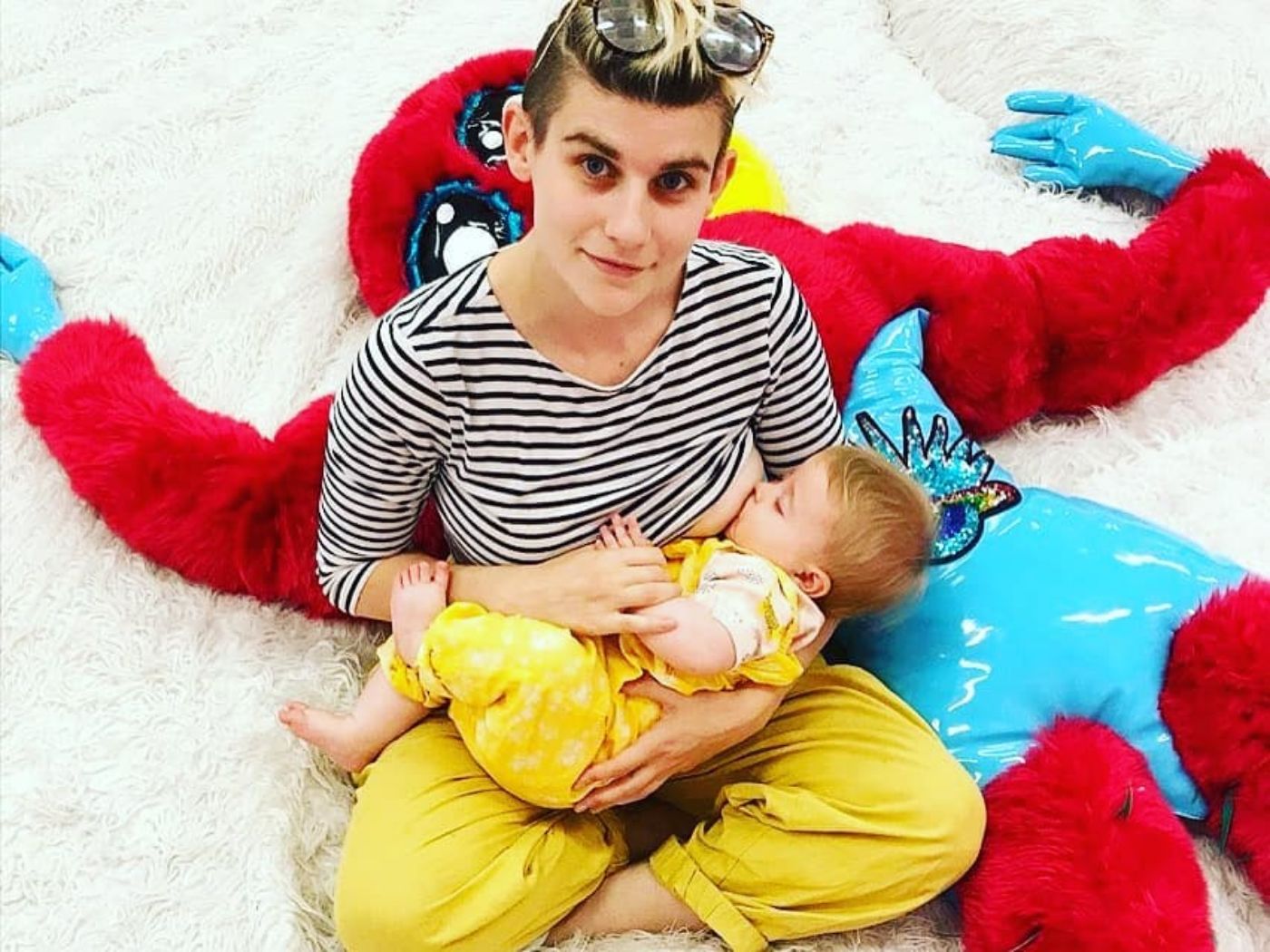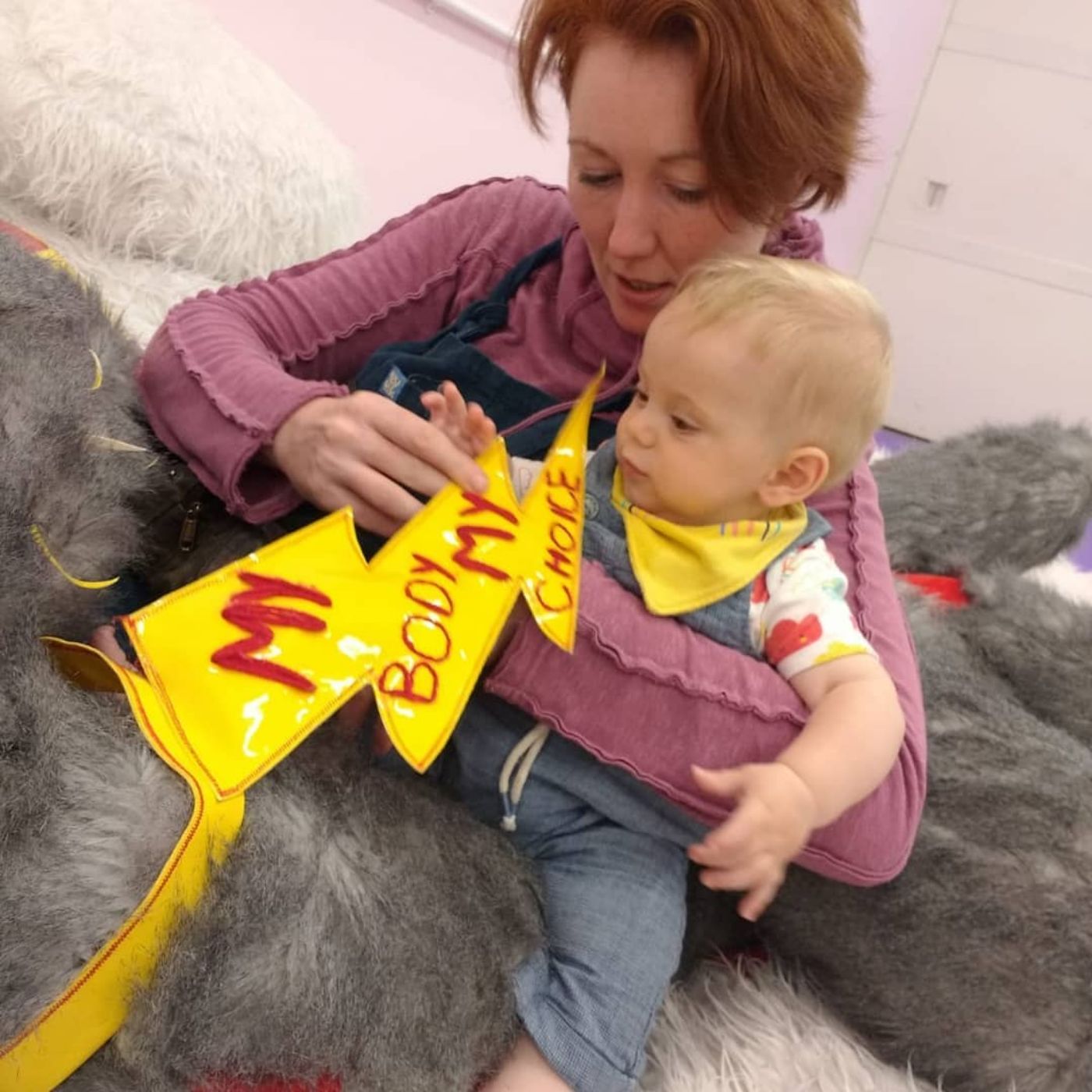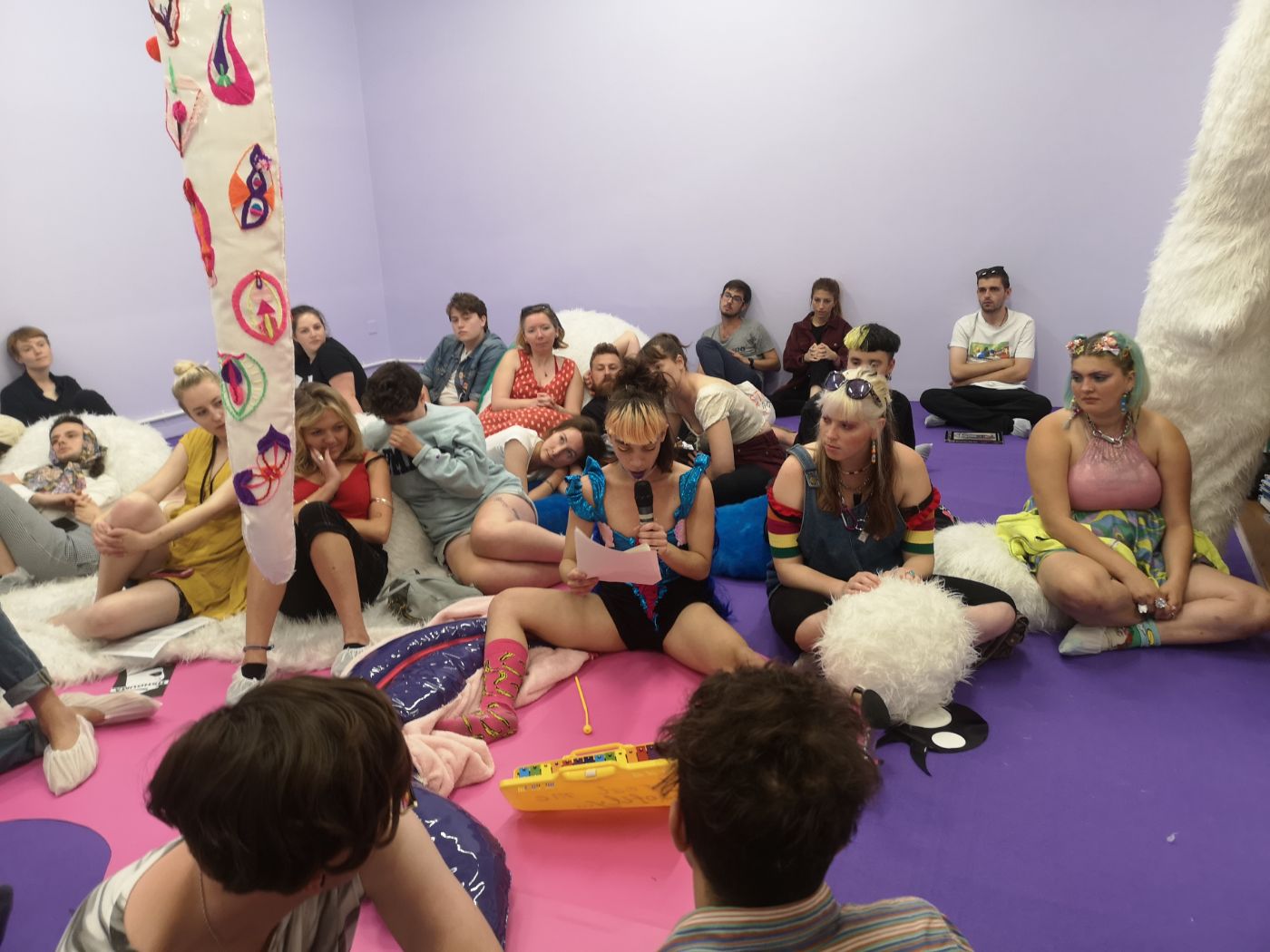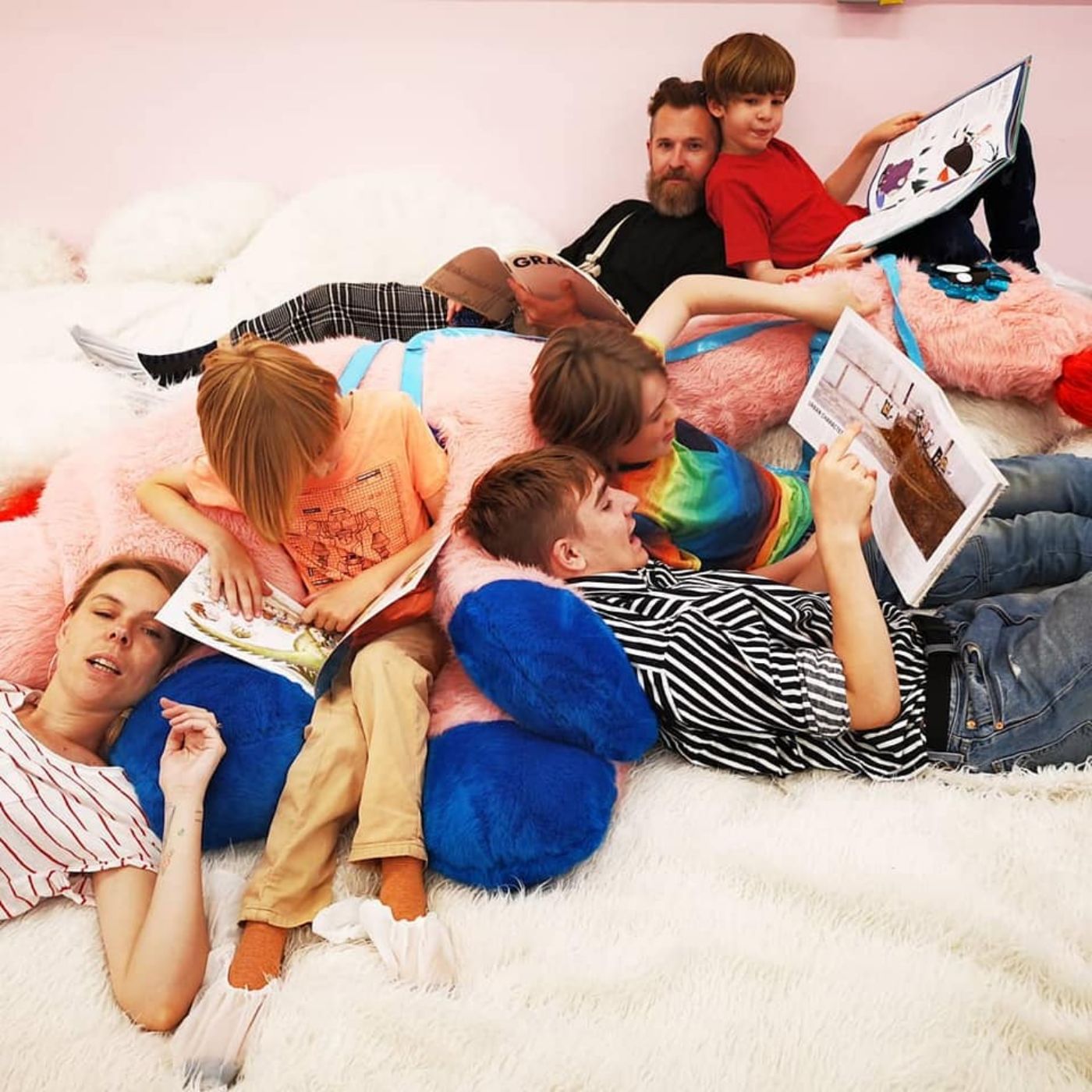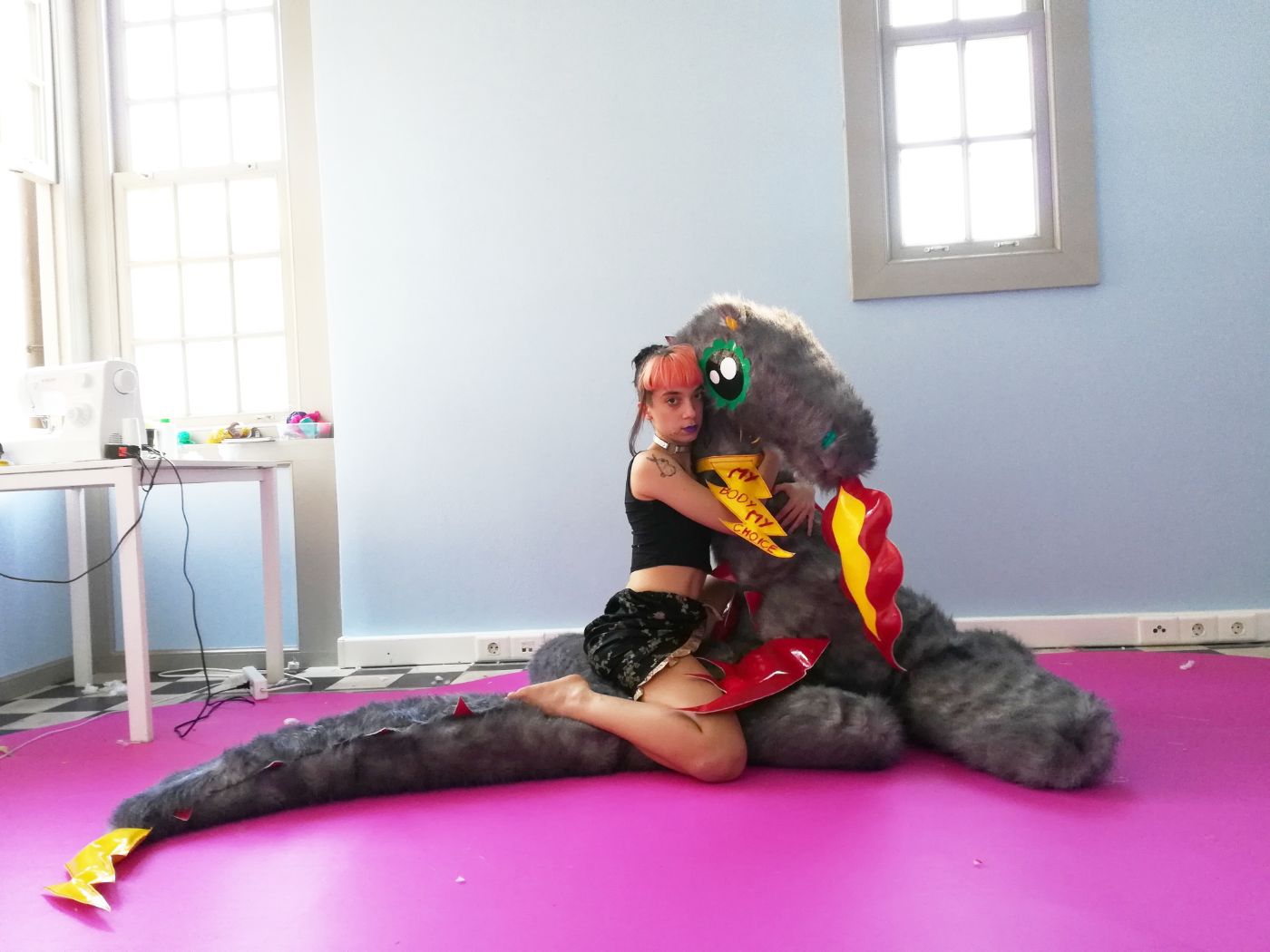Somewhere in a dreamland of fluffy monsters and pink glitter, one can find Antigoni Tsagkaropoulou. Antigoni’s work merges imaginary and real worlds, childhood memories and adult life and is influenced by feminist and queer theories. By changing pre-established narratives and stories, Antigoni creates a hub of gender and sexual fluidity, and feminist discourses in a world that is imaginary, yet easy to be immersed in. Using experience and sentiment in her arsenal, she creates stories for the unsung heroes of society and for the princes and princesses that don’t fit in fairytales. Her work — stretching from performances to installations, from sartorial choices to sewing huge teddy bears — is anything but easy to put in a box. In the same respect, as she aspires to deconstruct notions such as gender expression and sexuality, we try to unpack her artistic disposition through a social and artistic lens. Antigoni talked to und. about her ongoing Fluffy project and a new work she will be showing at Thessaloniki International Film Festival this month.
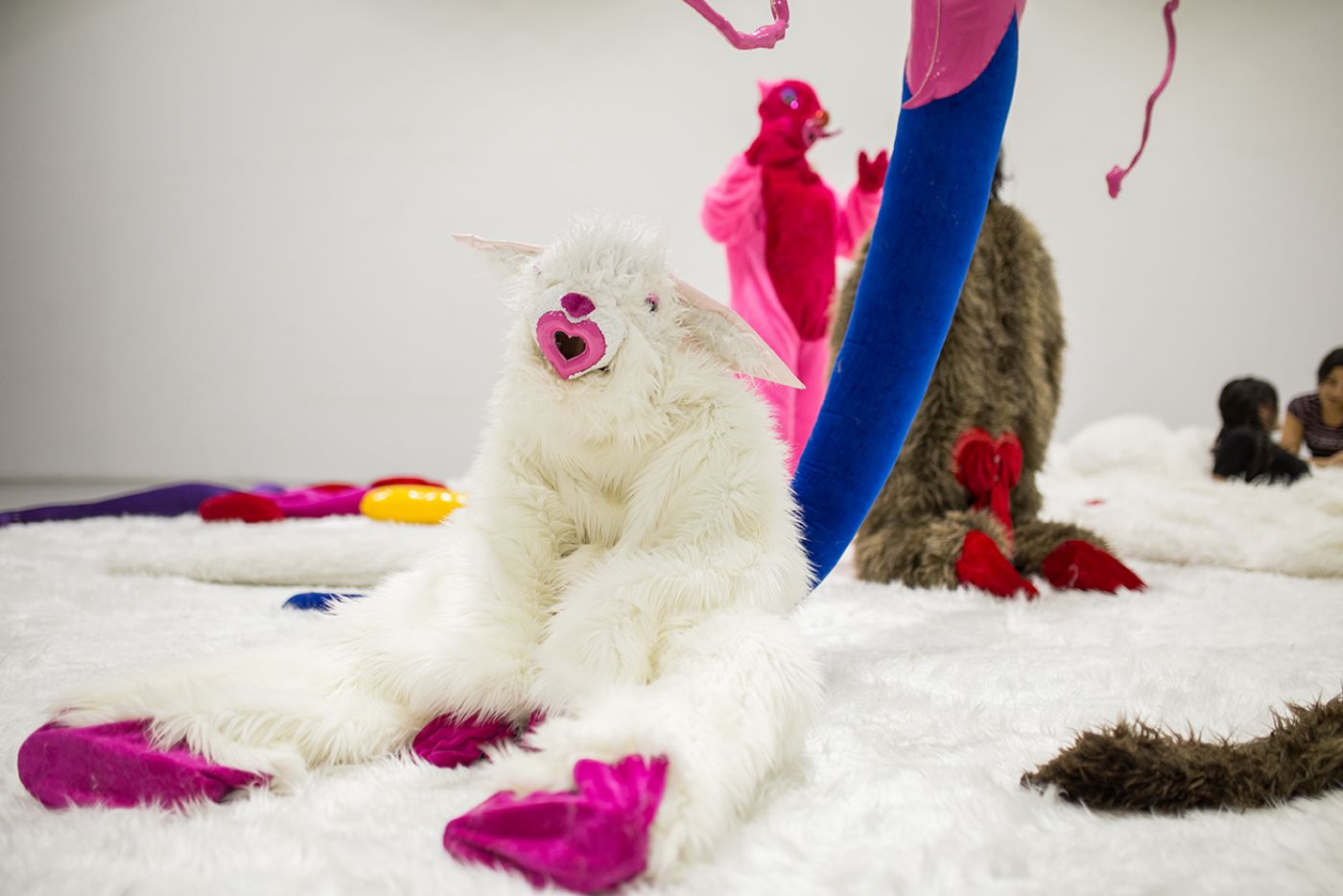
Antigoni, it’s safe to say that your work represents a distinctive queerness and feminism. What are your main references and inspirations? Do you think that such a visibly powerful stance has a better substantiality in terms of the narrative you want to create and share with the public?
My references come mainly from my personal exploration in relation to my subjectivity, my body, my desires and my social role. Since a young age I experienced sexism and oppression due to my identity and my sexuality as a girl. I realised just how intensely political my personal experience was only later, when I began reading feminist and queer theory and discovered women artists with a strong social commentary in their works. Donna Haraway, Jack Halberstam, Virginie Despentes were my way out of a male-dominated Athens School of Fine Arts that treated my works in most cases as perversions, or [merely] colourful forms without any political context. Pipilotti Rist encouraged me to do hysterical performances and unapologetically large installations, while biologist Lynn Margulis initiated me into her symbiotic, multi-species planet. My work has always been provocative for some, but it has helped me to empower myself and feel part of a community that is connected more to the queer [community] than ASFA’s fine arts [department]. The narratives I communicate through the furry worlds I create are attempts in emancipation through collective “magic spells”.
The execution and “appearance” of your projects, are usually in happy colours and approachable lighthearted characters. How do you keep a balance between playfulness and seriousness? To what extent does one influence the other, and how does the audience become more receptive in each expression?
It’s my magic trick to create relationships of intimacy with the non-normative, which can be seen as a threat within the heteronormative society we live in. Playfulness and seriousness are not indispensably opposites. Using playfulness as a potent political tool to create visionary realities and imaginary worlds, my intention is to build bridges of kinship between art, alternative pedagogy and activism. Through playfulness we can explore our subjectivities and sexualities; through softness and vulnerability we can create symbiotic and caring relations. What is cute can at the same time be sharp, girly can be feminist, glitter can speak about trauma and something fluffy can attack the patriarchy.
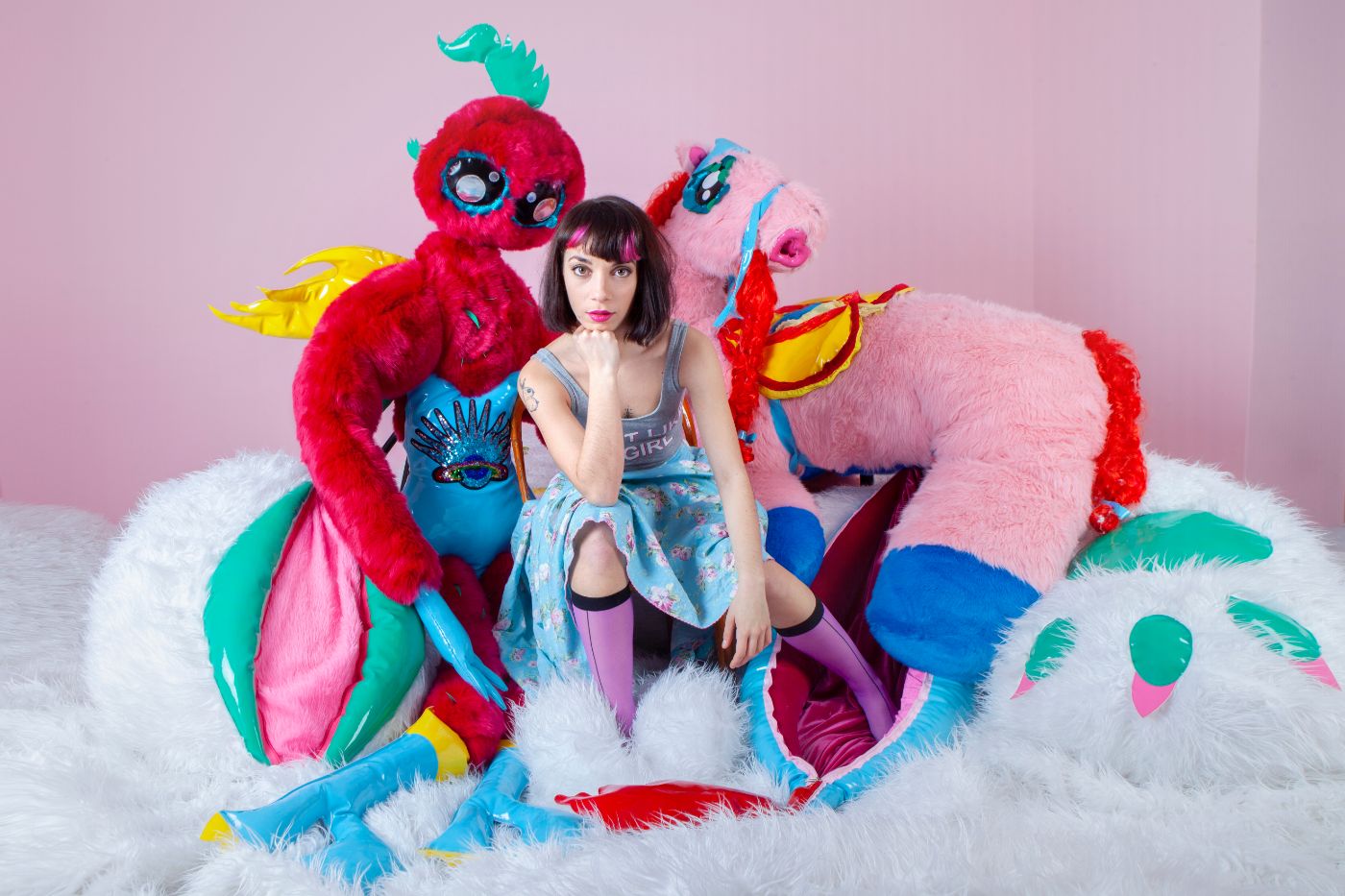
Would you say there is an interrogation of the nature of queerness within its softness and playfulness?
I feel the same exists in the way children play, who often deconstruct and recreate conventional stories in order to make their own hybrid and unexpected ones. For them, language is a playground and meaning is contingent, ever-shifting. That’s what I want to create in a way and queerness in my work comes out of the same process.
The fairytales you tend to incorporate in your work don’t necessarily have a hero per se, but a lot of characters that share sentiments of belonging, or of sharing their own narrative. If we claim that your installations work as queer hubs for people to lose themselves within a story, do you think this can be shared/applied in a patriarchal society? Is the safety one can feel within your fluffy bubble a response to the outside, or an aspiration for the outside?
My installations could be such spaces, but at the same time they attract people who are not necessarily queer. For example, Fluffy Library (2018-19) in Athens attracted many families who brought their children to this furry “playground” without knowing my references or what kind of creatures and books they would discover there. That’s why I would say that my installations are spaces for osmosis, without knowing what their safety limits are and for whom exactly. Perhaps for conservative, heterosexual parents, to discover a children’s book inside Fluffy about same-sex-parent families could be threatening. One time, a mother was worried Fluffy was too girly for her son; in the meantime he was running up and down the space ecstatically trying to discover it all! My hope is that this way I open up more dialogue and give stimuli to these families, dreaming that they will go back home a bit more colourful. Maybe it’s utopian, but at the end of the day it can be educational as well.
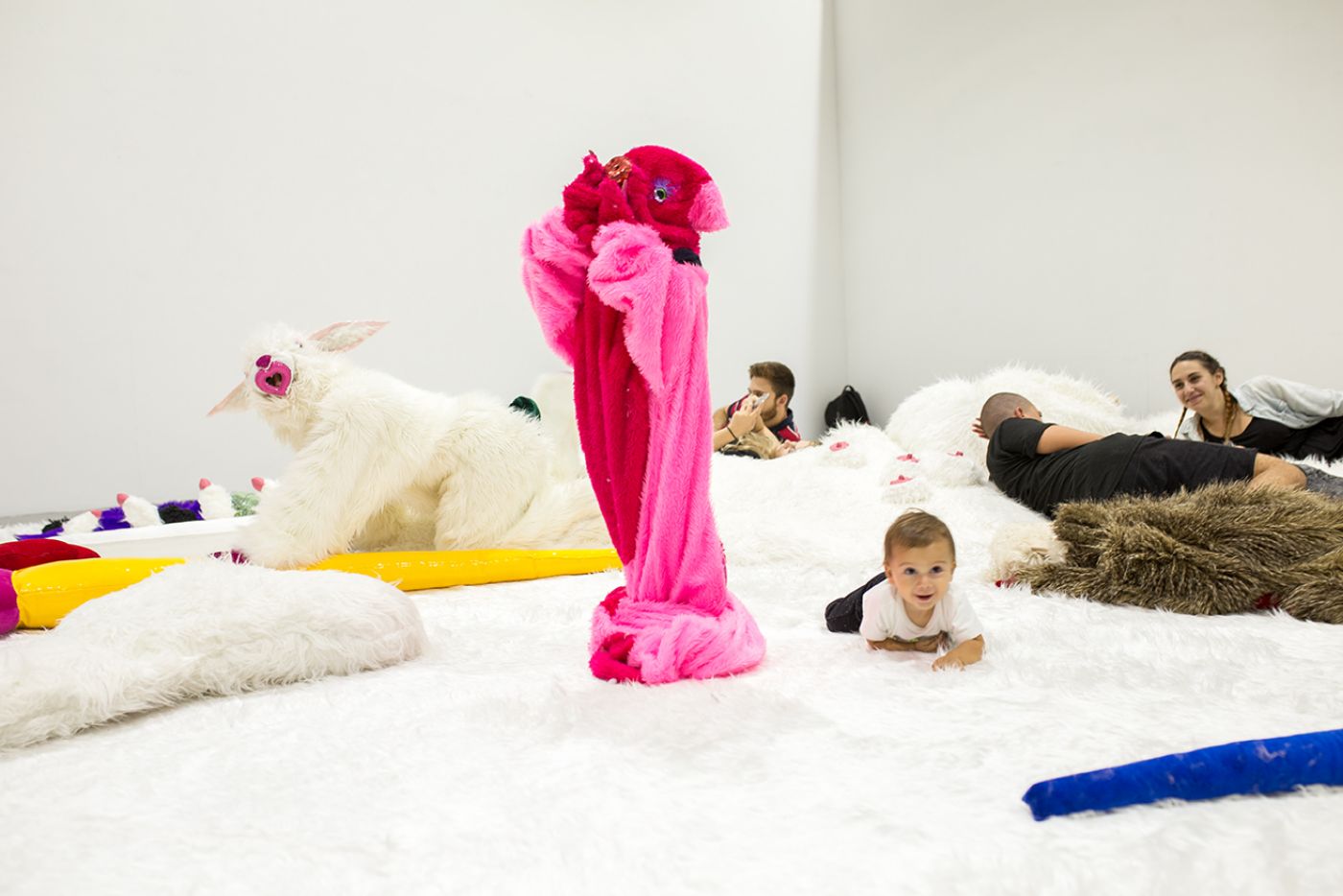
Let’s talk more about Fluffy. Your project Fluffy Land (2017), which later on became the Fluffy Library, is a project that keeps evolving and occupying spaces in order to create an environment. What was the primary inspiration that made you choose fluffiness? Would you say that fluffy then is a progress of creation in the same way as identity?
I first used fluffiness in my works during my early years at ASFA because I wanted to bring the world into close contact with all the things that were in my mind at the time. It all started with separate creatures and evolved into entire fictional worlds of which you could be a part. Definitely, a source of inspiration in the evolution of Fluffy were characters that combined cute monstrosity and uncanny softness, like my cat, children’s animations like [Pixar’s] Monsters Inc and [Studio Ghibli’s] Spirited Away, subcultures like Furry Fandom and Trickster myths.
What I have noticed is that people talk about Fluffy as something alive, or as if I’m it. That’s why it’s very difficult for me to tell where I end and where Fluffy begins. It is part of the exploration of my own subjectivity.
Fluffy means:
To be hybrid and fluid
To be a soft beast, a fragile monster, a vulnerable cyborg
An enormous and unapologetic alliance of deviation
Fluffy means to mutate
To be in a process of becoming with … me
and take care of each other while we are transforming to the unknown.
To respect our boundaries and be aware of our privileges while we are brushing the pain away
To have the choice to be genderless, ageless and speciesless.
To not define but redefine
and create new narratives
together
To embrace alternative forms of intimacy and family
To make kinships with the non-human
To transition between genders and kingdoms of classification:
I am the knight-princess of the giant amoebas of chaos. I like to wear high heels on my thousand pseudopods. I don’t have a skin but a flexible membrane that allows me to change shape from one moment to the next. My family consists of all the unfaithful offspring of the goddesses of the abyss:
1. The witches that you couldn’t burn
2. The hairy fairies
3. The not-so-little mermaids
4. Τhe pregnant masculine seahorses
5. The rebel monsters who were left out at school,
6. The alienated aliens who were thrown out of their planet
7. The disorderly dogs who have been kicked out of home
8. The heroines who were overshadowed by super-men
9. The gossip fishwives – annoying daughters, notoriously loud and fouled-mouthed vixens
10. The hysterical pussycats who are smashing patriarchy with their tentacular paws
11. The vulnerable evils
12. The forgotten hags
13. The real crying crocodiles
14. The dragons who want to become princesses
15. The bearded beauties
16. The failed knights
17. The pansexual albino cockatoo parrots
18. The huge furry monsters who are longing for love and care
all together
we are safeguarding the ageless non-existence of life and death
Re-writing history and reclaiming our place in eternity
Co-existing with radical tenderness
hacking the surface of the skin
reshaping the memory that is inscribed upon it
deconstructing the necropolitical playgrounds of our bodies
brushing, pushing, cuddling,
healing
taking care of every hair our collective furry body has
remembering, remembering, remembering
It’s so FLUFFY I am NOT gonna die!
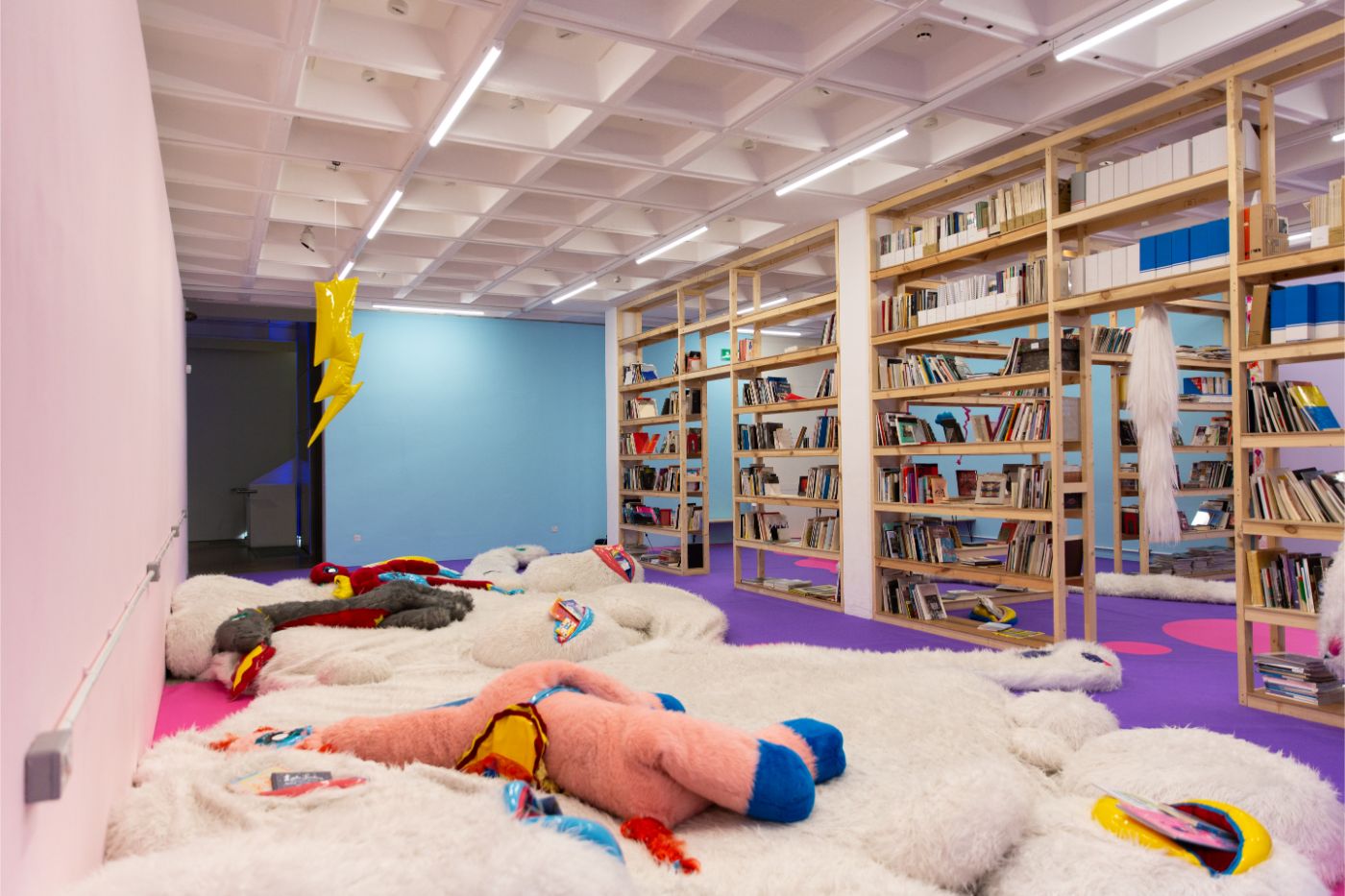
After Athens, Fluffy travelled to Bristol. How was that different for example, from the Atopos CVC installation, and what influenced your decisions in curating the space?
Fluffy was at Arnolfini Centre for Contemporary Arts in Bristol from 11 July - 11 August 2019. A main difference was that the Arnolfini space is wheelchair accessible, and Fluffy had expanded across the space with special care so that people with mobility disabilities could experience it as well. We organised actions for children about the evolution of Fluffy and we designed special manuals and colouring books. Drag queen Pom Pom from UK’s Drag Queen Story Time read some of Fluffy’s favourite gender-neutral stories to children and Burning Eye Books organized a cozy poetry performance event for children and their families. The opening event was an evening of performative audio-visual stories of hybridity, vulnerability and disability with a guest appearance by Pop Tektonism (Lykourgos Porfyris), who presented his fairytale Vulnerable Monsters, which began inside Fluffy in November 2018.
If you could indeed pinpoint the form which Fluffy will take in the future (or at least the one you hope it does), what would you want it to be?
Fluffy is a hybrid platform of coexistence that constantly mutates, spreads fantasies and absorbs stimuli through collaborations in order to discover its identity. I’m interested in it invading into even more unexpected environments which are not necessarily related to art spaces. I want to explore the educational part of the project more, all the while connecting it even more with children and families. Until we re-mutate into something new and find a new home, I would like to make and publish a fairytale about Fluffy and its adventures.
You are participating in the art exhibition opening as part of Thessaloniki International Film Festival later this month. Can you tell us a bit about the work you're showing there?
Η Λούνα κάτω από τη Ροζ Πανσέληνο (Luna under the PinkFullMoon) is a new fictional work I’m working on for the TIFF art exhibition. The protagonist is Luna, a stripper bat who narrates her adventures in PinkFullMoon cave and her nights full of bat sisterhood, radical pole dancing and collective protection spells. [In the story], this cave is a refuge of empowerment against the largest bat hunt ever unleashed. Luna under the PinkFullMoon is a visionary fiction work inspired by Silvia Federici and modern witch hunts, through a personal narrative talking about trauma, loss and the political dimensions of the body. At the exhibition I will present Luna and her stories, and my goal is to develop the work further to become a larger installation that will include storytelling performances and pole dancing.
